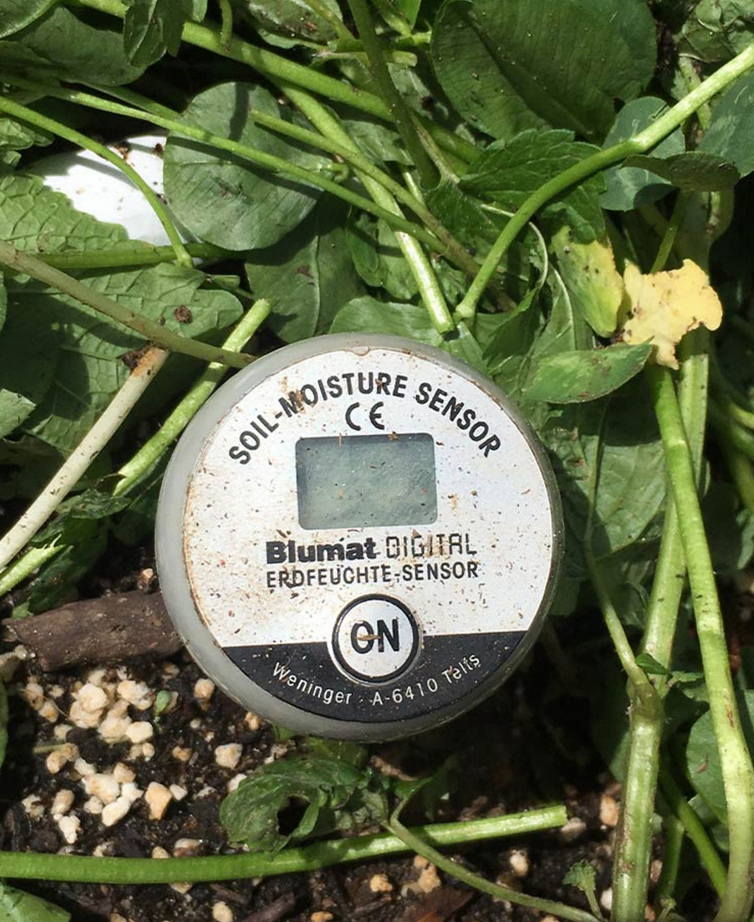Delve Into the Globe of Moisture Meters: Every Little Thing You Required to Know
In the realm of dampness meters lies a globe of precision and functionality that typically goes unnoticed. Comprehending just how moisture meters operate, the various types offered, and their varied uses can lose light on their significance in ensuring high quality and performance.
How Moisture Meters Work
Moisture meters run by gauging the electrical conductivity or capacitance of products to establish the moisture web content present. These meters are very useful tools across numerous sectors, including woodworking, construction, and agriculture. By making use of different techniques such as pinless or pin-type modern technology, moisture meters offer precise analyses that aid specialists make informed decisions.
Pin-type dampness meters work by inserting the sharp pins into the material being checked. The electric conductivity in between the pins is after that determined, with greater dampness degrees leading to increased conductivity. Moisture Meter. On the other hand, pinless moisture meters use electromagnetic signals to scan a larger area without causing any damage to the material's surface. These meters are perfect for quickly evaluating moisture levels in huge locations or finished items.
No matter of the technique utilized, wetness meters play an important function in avoiding concerns such as mold and mildew development, structural damages, or product issues triggered by excess wetness. Comprehending how these meters job is necessary for making sure the quality and honesty of materials in numerous applications.
Kinds of Moisture Meters
Given the critical duty moisture meters play in numerous markets, it is important to recognize the various types readily available to experts for accurately examining moisture degrees - Moisture Meter. There are primarily 2 main sorts of moisture meters: pin-type and pinless dampness meters

On the various other hand, pinless moisture meters make use of electromagnetic sensing unit plates to scan a bigger area of the material without creating any type of damages. This type is ideal for rapidly scanning huge areas and is generally utilized for floor covering, walls, and ceilings. Pinless meters are convenient for taking analyses on finished surface areas without leaving any visible marks.
Both sorts of wetness meters have their benefits and are chosen based on the details requirements of the job available. Understanding the differences in between these kinds is important for specialists to make accurate wetness analyses.
Applications Across Industries
Building professionals count on moisture meters to analyze the wetness degrees in structure materials like concrete, drywall, and wood, which is vital for maintaining architectural integrity and stopping issues like rot or mold. The floor covering market uses wetness meters to measure the wetness content in subfloors prior to mounting different flooring treatments, stopping pricey problems due to excess dampness. In the food industry, wetness meters are used to keep an eye on and control moisture levels in items such as grains, nuts, and dried out fruits to maintain freshness and top quality.
Tips for Using Dampness Meters
Make use of the dampness meter's calibration setups to make certain exact analyses when gauging the dampness web content in numerous materials. Furthermore, make certain the meter is set to the correct dampness variety for the material you read what he said are measuring to acquire the most accurate results.
When using a pin-type dampness meter, put the pins to the ideal deepness suggested for the material being evaluated. This guarantees that the moisture analyses are extracted from the right depth within the material, providing an extra exact representation of its dampness web content. For pinless wetness meters, bear in mind to keep correct contact with the product's surface area to get dependable readings.
Frequently check and change the batteries in your moisture meter to prevent unreliable readings because of low power. Shop the meter in a safe and completely dry area when not being used to lengthen its life expectancy and keep its accuracy. By complying with these tips, you can make best use of the performance of your wetness meter and get accurate wetness web content measurements throughout Resources different products.
Upkeep and Calibration
To guarantee the precision of dampness content measurements, routine upkeep and calibration of the moisture meter are vital actions in its correct functioning. Upkeep involves keeping the wetness meter free and clean from debris that might influence its analyses. It is necessary to comply with the maker's guidelines for cleaning up to avoid damages to the tool. In addition, regular calibration is essential to verify the accuracy of the readings. Calibration adjusts the moisture meter to guarantee that it supplies consistent and dependable outcomes.
Calibration should be performed periodically, especially if the moisture meter is used regularly or in essential applications where specific dimensions are needed. Numerous moisture meters feature calibration tools or can be calibrated by specialist solutions. Moisture Meter. It is advised to keep a log of calibration dates that site and results to track the efficiency of the wetness meter in time. By calibrating the dampness and preserving meter frequently, users can rely on the precision of the wetness content dimensions obtained.
Final Thought

In verdict, moisture meters play a vital role in various markets by properly measuring the moisture material of products. Recognizing how these gadgets work, the different kinds readily available, and proper maintenance and calibration are vital for getting reliable results. Whether in farming, production, or building and construction, the use of dampness meters assists guarantee quality assurance and effectiveness in procedures.

In final thought, moisture meters play an essential role in various sectors by precisely determining the moisture content of products.